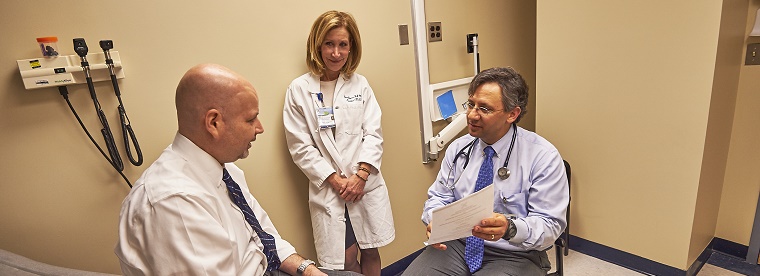Nearly 50,000 Americans are diagnosed with cancer of the pancreas each year. In the vast majority of these cases — approximately 95 percent — patients have one specific type of cancer: adenocarcinoma of the pancreas.
The remaining 5 percent of pancreatic cancer patients have different treatment options and prognoses.
A Brutal Disease
As with any cancer, when one of the body's mechanisms for controlling the growth of abnormal cells breaks down, those atypical cells begin to divide rapidly and form one or more tumors.
After a person develops a pancreatic tumor, many of the cancer cells can spread outside this organ. Some of those tumor cells will travel to other body parts via the bloodstream or lymphatic system. Most often, they go to the liver, lungs and abdominal cavity.
Pancreatic cancer is particularly deadly because of the pancreas' location ― in the middle of the abdomen and close to vital organs. Also, tumors that develop in the pancreas typically do not cause symptoms until they have grown to cause symptoms in the area of the pancreas, or have even spread to other parts of the body. As a result, doctors often find and diagnose pancreatic cancer when it has already reached a more advanced stage than other cancers.
In fact, about 60 percent of the time, a patient's pancreatic cancer has already spread by the time he or she receives a diagnosis. In another 20 to 25 percent of cases, the cancer hasn't yet spread at the time of diagnosis, but is inoperable.
Even when pancreatic cancers are detected at early stages, they tend to be extremely aggressive. In fact, more than 70 percent of pancreatic cancers that are successfully operated on still lead to death.
Treatment Options
Pancreatic cancer treatment involves a multidisciplinary effort. A surgeon, medical oncologist, radiation oncologist, and others work together to determine which actions and therapies should have the most desirable outcomes.
Only 10 to 20 percent of pancreatic cancer patients are diagnosed with an operable cancer, the only type of pancreatic cancer that can be cured. Inoperable cancers can be controlled or treated, but not cured. Sometimes, an inoperable cancer treated with radiation therapy or chemotherapy can be rendered operable.
When a patient has an incurable form of pancreatic cancer, chemotherapy is usually helpful.
Without chemotherapy, the symptoms of cancer can be devastating. These include severe pain, chronic fatigue and extreme weight loss. Chemotherapy can stabilize and even shrink tumors, weakening their physical impact and causing patients to feel better. Plus, chemotherapy regimens have become more effective in recent years, and their side effects are generally short-term and cyclical, allowing a patient to maintain a relatively high quality of life despite being on chemotherapy
New Research, New Hope
Research into pancreatic cancer is going strong. Medical experts are exploring a wide range of drugs and therapies and dozens of clinical trials are underway.
If you get a pancreatic cancer diagnosis, a second opinion is vital, and it's important to see oncologists and specialists with extensive experience. In addition, try to go to a medical facility that offers innovative pancreatic cancer treatment options. With personalized, cutting-edge care, you should be able to fight the cancer, and maintain as high a quality of life as possible, for as long as possible.

